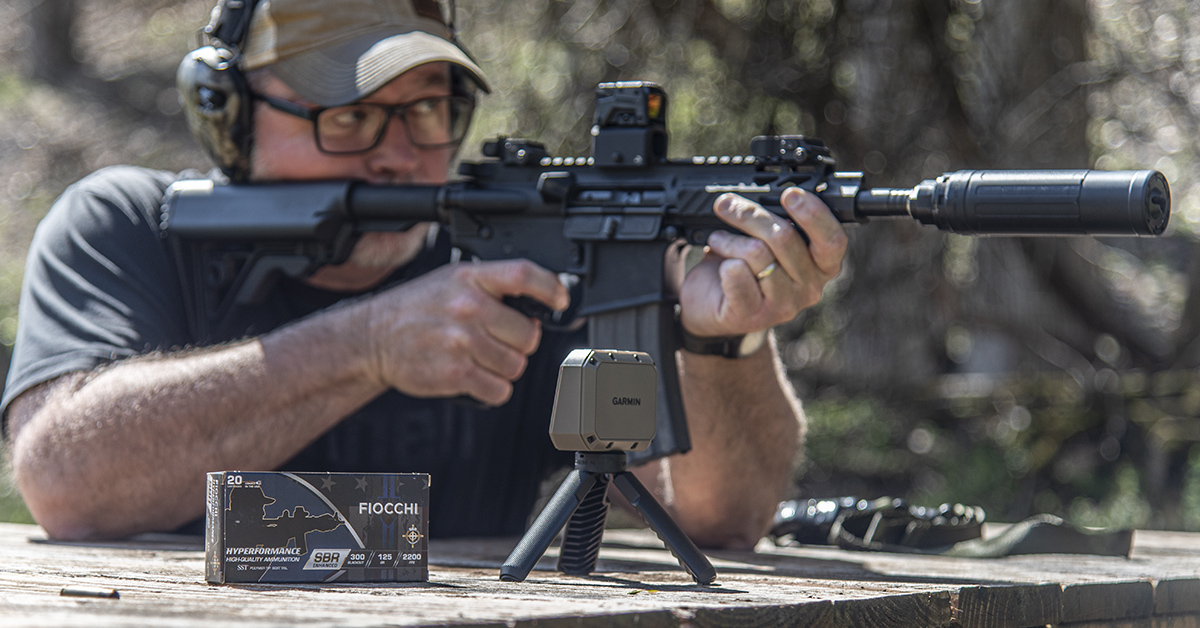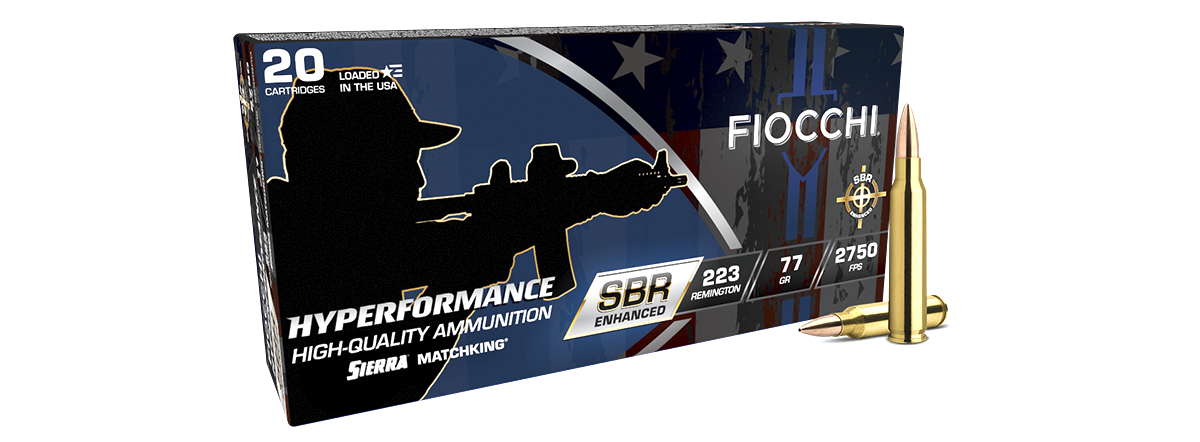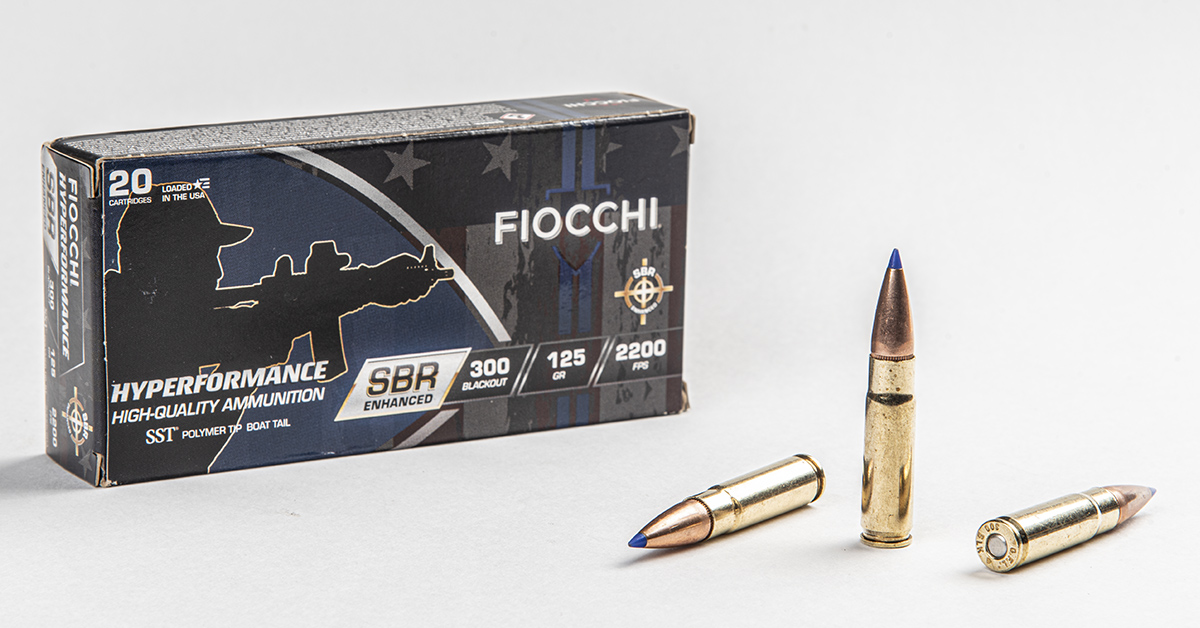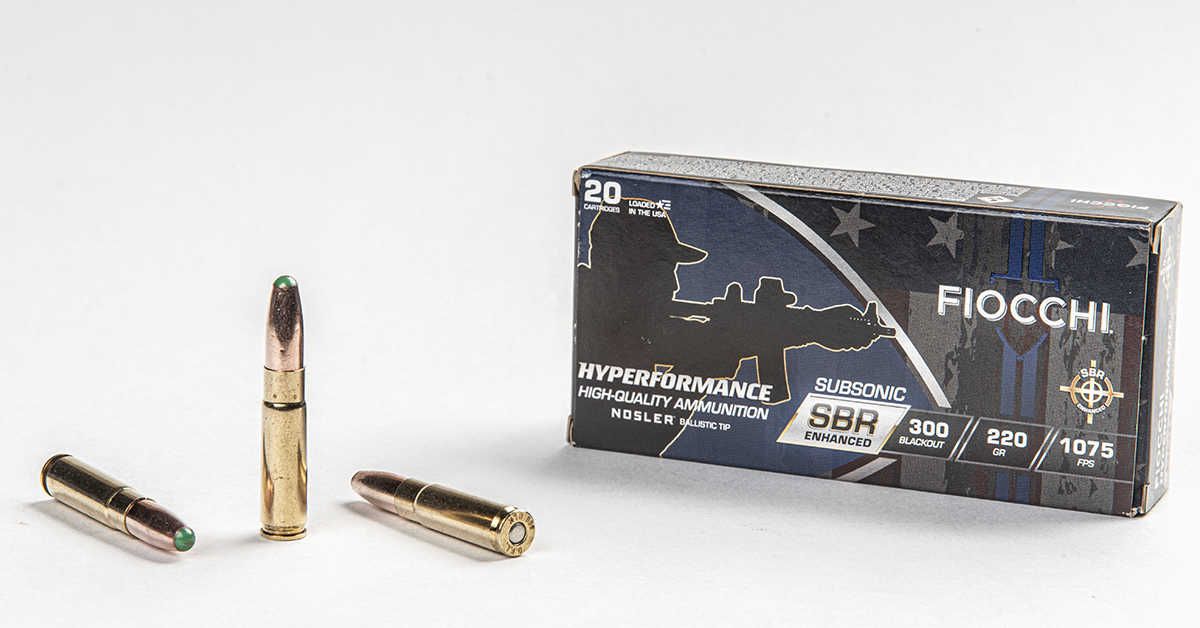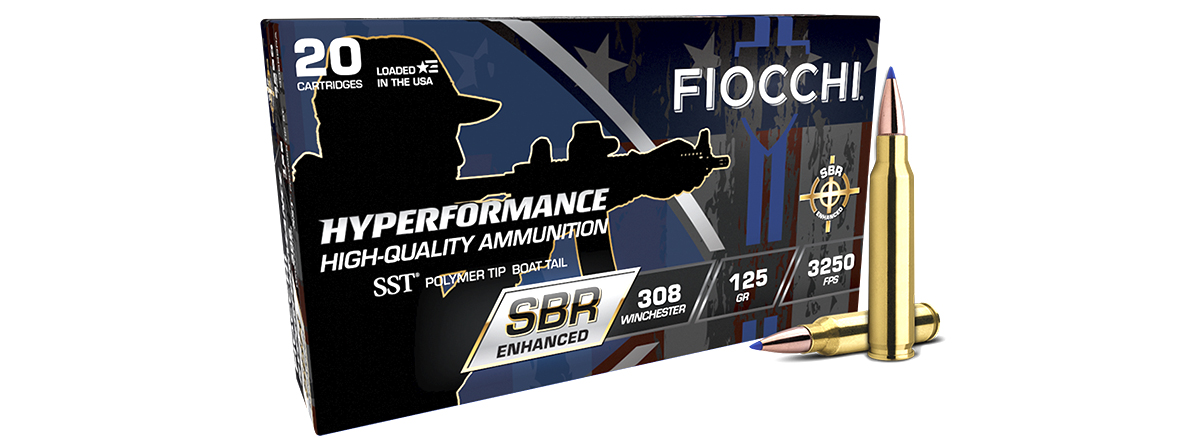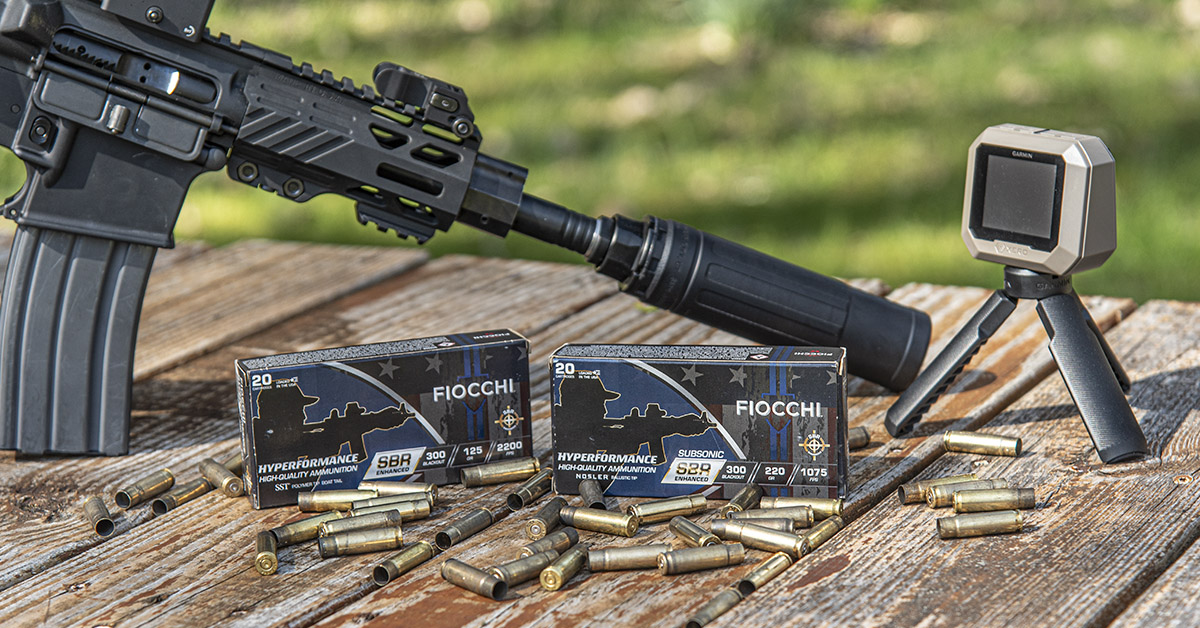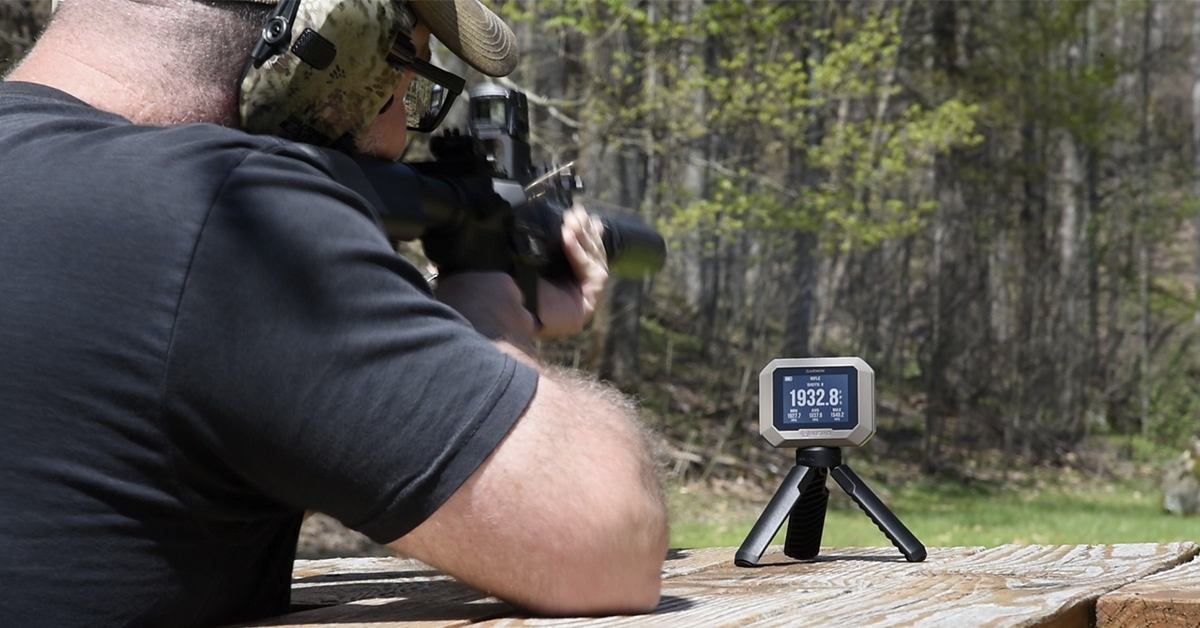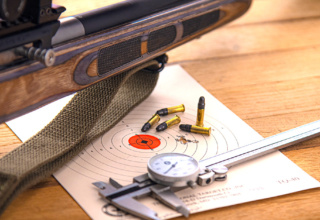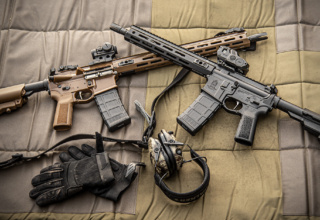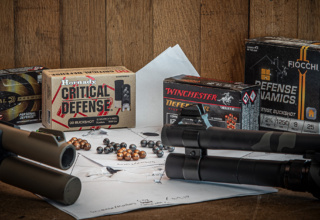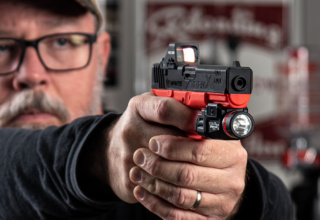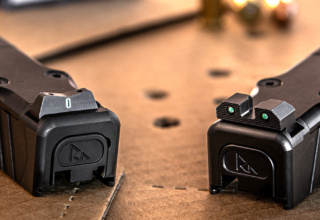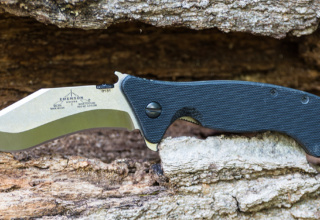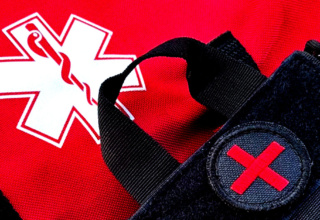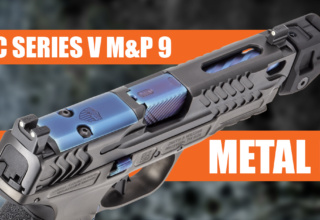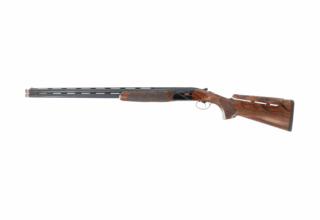Fiocchi takes the guesswork out of short-barrel rifle ammo selection with the company’s new line of SBR Enhanced cartridges for home and personal defense
by Rob Reaser
For many AR-15 fans, the short-barrel rifle configuration is the next step up in a personal or home defense platform. Such was my thinking when I went through the administrative aggravation of building a short-barrel AR rifle during the early part of nonsensical Covid years.
The SBR made a whole lot of sense to me in a .300 Blackout chambering. The cartridge has much to lend itself as a defensive round, and it is suitable for small- and medium-sized game hunting should one need to fill the larder in an economic or societal disaster. As for balancing portability and practicality, it’s tough to beat an SBR in this caliber. An abbreviated barrel coupled with a collapsible stock makes it easy to pack and tote in a cramped vehicle or on foot.
More importantly, the SBR delivers optimal firepower while being highly maneuverable in a home environment due to its short length. That’s why it is my in-house go-to firearm.
SBR “Challenges”
Since the SBR strays somewhat off course from mainstream firearm and ammunition design, some special considerations are usually in order. The typical pistol-length gas system and short barrel configuration, for instance, often demand tweaking of the AR’s buffer weight/gas block and ammunition combination to ensure reliable cycle-of-operation. The SBR’s shorter barrel tends to reduce a load’s rated muzzle velocity because the ignited powder doesn’t achieve maximum burn before the bullet exits the muzzle (when compared to longer rifle barrels). Another issue is “flash blast.” Since the powder charge doesn’t completely burn out in shorter barrels, there tends to be more muzzle flash with SBRs.
Such is problematic when firing in a darkened environment.
Many folks who move into the SBR world have questions. A big question is, “What ammo should I use in my gun?”
Fiocchi Makes it Easier
Well, the folks at Fiocchi have addressed this issue with a new line of ammunition the company announced earlier this year. The line is called Hyperformance Defense, and within that line is the Hyperformance Defense SBR Enhanced series. Its purpose is to provide SBR owners with an optimized loading for their diminutive firearms.
To get the inside thinking behind Fiocchi’s new SBR Enhanced ammo, we went straight to the source. Travis Franklin, Product Manager at Fiocchi of America, was good enough to give us some insight into this intriguing new ammo line.
“The Enhanced SBR line was really created as a result of consumer inquiries,” Franklin explained. “With the rise in popularity of AR-style pistols and SBRs, we were consistently getting asked through customer service and in person at shows and events, ‘What do you recommend I use for hunting and defense?’

“We took those questions and wanted to create a line specifically labeled and marketed for SBRs to assist consumers — essentially doing the work for them to find the best all-around SBR solutions for each caliber. What we found was that there is not one consistent bullet design that works at reduced velocities across all calibers. So, instead, the approach we took was to match a specific bullet to each specific caliber based on performance.”
There are four loadings in the SBR Enhanced ammo series matching the most popular AR-15 platform SBR chamberings — .223 Remington, .300 Blackout supersonic, .300 Blackout subsonic, and .308 Winchester. The .300 Blackout ammo comes in both supersonic (2200 fps) and subsonic (1075 fps) loads.
According to Fiocchi, the Hyperformance Defense series “includes precision-engineered SBR Enhanced ammunition, optimized for short barrels ranging from 7.5” to 11.5″, and designed to deliver maximum ballistic and terminal performance.”
We asked Franklin to give us a deeper dive into the what, why, and how the SBR Enhanced ammunition achieves its goal of delivering upgraded performance for the short-barrel rifle platforms.
SBR Enhanced .223 Remington
“Military and LE have used the 77-gr. SMK for nearly two decades now in their short-barreled platforms,” said Franklin. “Due to the massive reduction in muzzle velocity going from a 16″ or 18″ barrel down to a 10.5″ barrel, lighter weight projectiles really lose a lot of downrange performance. The 77-gr. has enough mass to retain energy and velocity downrange.
“From the tests we have performed here, the 77-gr. SMK tends to yaw MORE than the 55-gr FMJ, as well as transfers more energy and retain velocity downrange. Using the velocity data gathered during our testing, out of a 10.5″ barrel, a 55-gr. projectile will produce roughly 750 ft/lbs of energy at the muzzle. A 77-gr. produces around 850 ft/lbs. And finally, once you get past 200 yards (specifically around 240-250 yards), the 77-gr. is actually moving faster than 55-gr. due to the higher mass and BC retaining more velocity.
“So, in short, the 77-gr. produces nearly 15% more energy, penetrates deeper (due to increased mass), retains higher velocity downrange, and typically creates larger permanent wound cavities due to yawing and fragmenting.”
SBR Enhanced .300 Blackout
Because of the .300 Blackout’s popularity in short-barrel ARs — especially when shooting suppressed — Fiocchi debuted their SBR Enhanced ammo with two loadings: supersonic and subsonic.
.300 BLK Supersonic – “Since this caliber was designed specifically for short barrels,” said Franklin, “the 125-gr. SST already performs well, but we took it a step further by including flash suppressant in the powder to reduce (not eliminate) muzzle flash as much as possible.”
.300 BLK Subsonic – “Of all the testing we conducted,” Franklin said of the subsonic load, “the 220-gr. Nosler BT performed the best by far. This bullet retains enough energy and velocity to expand out to nearly 200 yards when fired from a 10.5″ barrel.”
SBR Enhanced .308 Win.
.308 Winchester – Development of the SBR Enhanced in .308 Win. took a somewhat interesting turn for the Fiocchi engineers. “With heavier weight projectiles at reduced velocities,” Franklin explained, “what we found was that we often saw performance reduced to a point that the .308 SBR really offered little to no advantage over a .300 BLK. By switching to a ‘light-for-caliber’ bullet (125-gr.), we’re able to achieve such an extremely high initial muzzle velocity out of 18″ barrels that even once the barrel length is reduced to a 12″ it still achieves high enough muzzle velocity to scream down range and make an AR-10 SBR or pistol a highly effective defense or hunting platform with increased performance above a .300 BLK but in a small SBR/pistol platform.”
Fiocchi SBR Enhanced Meets the Chrono
To put some real numbers to the ammo, we hit the range with Garmin’s extraordinarily fabulous Xero C1 Pro radar chronograph. (We’ll have a full discussion on this little gem in an upcoming article.) The test platform was a DIY AR hosting a Faxon 10.5-inch barrel chambered in .300 BLK.
Supersonic / Subsonic Numbers Crunch
We conducted the first test to give a relative comparison between the SBR Enhanced supersonic and subsonic ammo while shooting suppressed. For the suppressor, we tapped Dead Air’s new Sandman X. This is a .30-caliber suppressor and the second-generation in the Sandman series. We’ll have an article on this one forthcoming, but for now, know that this suppressor is a large step ahead of its predecessor and one you need to check out.
SBR Enhanced 300 BLK Supersonic (suppressed, 10 rds)
- Bullet Weight: 125 gr.
- Average Velocity: 1941.9 fps
- Average KE: 1046.52 ft-lbs.
- Power Factor: 242.7
- Standard Deviation: 10.7 fps
- Spread: 38 fps
SBR Enhanced 300 BLK Subsonic (suppressed, 10 rds)
- Bullet Weight: 220 gr.
- Average Velocity: 1099.8 fps
- Average KE: 596.19 ft-lbs.
- Power Factor: 244.2
- Standard Deviation: 8.5 fps
- Spread: 28.3 fps
Fiocchi lists the supersonic round as having an average muzzle velocity of 2073 fps in their testing with a 10.5-inch barrel and muzzle energy of 1193 fps. Our results were just shy of that by 131.1 fps and 146.48 ft-lbs, respectively.
Moving to the subsonic load, Fiocchi clocked 1111 fps and 603 ft-lbs from the 10.5-inch barrel while we recorded 1099.8 fps and 596.19 ft-lbs — 11.2 fps and 6.81 ft-lbs less.
Fiocchi didn’t mention using a suppressor in their testing, but since there are many possible variables that can influence these numbers, we feel our results are within the expected performance range.
Unsuppressed vs. Suppressed – Supersonic
Next, we did a quick comparison shooting both supersonic and subsonic loads unsuppressed and suppressed using the same equipment.
Unsuppressed .300 BLK supersonic (5 rds)
- Bullet Weight: 125 gr.
- Average Velocity: 1937.7 fps
- Average KE: 1042.08 ft-lbs.
- Power Factor: 242.2
- Standard Deviation: 16.3 fps
- Spread: 44 fps
Suppressed .300 BLK supersonic (5 rds)
- Bullet Weight: 125 gr.
- Average Velocity: 1928.4 fps (-9.3)
- Average KE: 1032.06 ft-lbs. (-10.02)
- Power Factor: 241.1 (-1.1)
- Standard Deviation: 5.9 fps
- Spread: 18.4 fps
Unsuppressed vs. Suppressed – Subsonic
Unsuppressed .300 BLK subsonic (5 rds)
- Bullet Weight: 220 gr.
- Average Velocity: 1096.7 fps
- Average KE: 587.46 ft-lbs.
- Power Factor: 241.3
- Standard Deviation: 11.5 fps
- Spread: 32.3 fps
Suppressed .300 BLK subsonic (5 rds)
- Bullet Weight: 220 gr.
- Average Velocity: 1094.3 fps (-2.4)
- Average KE: 585.06 ft-lbs. (-2.4)
- Power Factor: 240.7 (-0.6)
- Standard Deviation: 18.9 fps
- Spread: 52 fps
As you can see, there is a consistency in the change of velocity/KE when shooting the same ammo unsuppressed and suppressed. In each case, there was a predictable drop in muzzle velocity and impact energy with the suppressor. It’s not much, and broader shot strings could possibly minimize the disparity. Nevertheless, the assumption that adding a suppressor always boosts velocity is not something to hang your hat on. It’s a marginal change at best, and it doesn’t always go in the direction you might expect.
The supersonic SBR Enhanced ran flawlessly in our rifle. The subsonic, whether shooting unsuppressed or suppressed, did not always allow the bolt to strip the next cartridge from the magazine, and there was one failure for the bolt to lock back on an empty mag. This is not a surprise, as subsonic ammo often demands a change in the buffer weight or a tweak to the gas regulation via an adjustable gas block in order to cycle properly with a particular load and barrel combination. In fact, you can usually expect that to be the case.
Overall, Fiocchi’s concept of developing an ammunition line specific to the needs of the SBR owner is a long time coming, and it is one we welcome. Getting the right ammo for your SBR setup and intended application is a process…and sometimes a challenging one. But as Fiocchi Product Manager Travis Franklin said, they’ve done the work for you.

